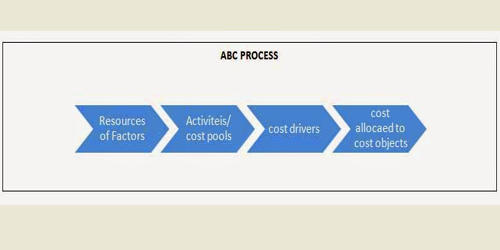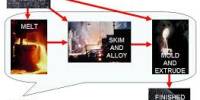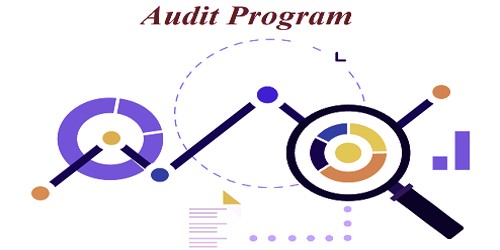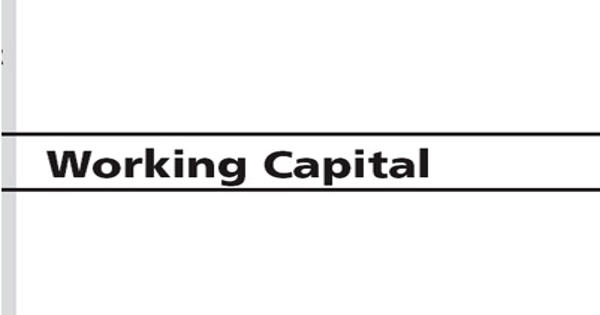Accruals are defined as recognition of revenue or expenses before cash is received or paid. However, accrual accounting does not only relate to events with cash moving afterwards, but also to situations with cash moving before recognition of revenue or expenses.
A deferral refers to recognition of revenues or expenses at some time after cash has been transferred.
To make it clear, let us stop on definitions of accruals and deferrals again. Accruals refer to recognition of events before cash flows. Deferrals pertain to recognition of events after cash flows.
Accruals and deferrals differences:

Sometimes deferred amounts are spread over a period of time and their recognition in the income statement is being made proportionally to time passed. Such situations create a need for allocations.
Allocation is a process of assigning a portion of an entire amount to each of several accounting periods.
Illustration # for accounting for deferrals
We will take a closer look at deferrals using an example.
Mrs. Piksvel decided to open a business. For this purpose on May 25, 20X7 she made a capital contribution of $4,400. The company was called SuperDels and mainly provided delivery services for corporate clients. On June 31, 20X7 SuperDels signed a contract with a local publishing company and received $3,000 as an advance payment for delivery services to be provided during the following 12 months. These services will be conducted within a year from June 31, 20X7, so they will have a continuing basis. To meet the client’s expectations for high quality and timely services, Mrs. Piksvel bought a car costing $4,000 with a salvage value (see below for the definition) of $500. It is estimated that the car will be in use for 5 years. SuperDels incurred $300 of expenses in 20X7 and paid them with cash. In addition, Mrs. Piksvel had invested $1,000 into land. Summary of all transactions is presented below:
- Owner made a $4,400 capital contribution.
- SuperDels collected $3,000 cash in advance for services to be performed between June 31, 20X7 and July 1, 20X8.
- SuperDels purchased a car for $4,000 with a salvage value of $500 and 5-year useful life.
- $1,000 was invested in land.
- SuperDels incurred and paid operating expenses of $300.
- An adjusting entry is required to recognize revenue earned in 20X7.
- An adjusting entry is required to recognize expense incurred in 20X7 associated with the car use.
Let us see what effects the transactions above will have on the accounting equation and financial records.
Analysis of capital contribution transaction
1) The capital contribution of $4,400 is an asset source transaction and we already know effects of such transactions:
Illustration: Effect of capital contribution
Assets | … | Equity | |
Cash | … | Contributed Capital | |
| Beginning Balances | $ 0 | $ 0 | |
| 1) Capital Contribution | +4,400 | +4,400 | |
| Ending Balances | 4,400 | 4,400 |
Analysis of unearned revenue transaction
2) On June 31, 20X7 SuperDels received $3,000 in advance for services to be performed during a year ending July 1, 20X8. On June 31, 20X7 no services had been delivered yet, thus, Mrs. Piksvel could not recognize any revenue at that time. Even though cash in its full amount had already been received, the entire volume of services still needed to be completed before any revenue could be recognized. We can say that the revenue is deferred until services are provided. The deferred revenue amount is the company’s liability because it is obligated to perform services. The account that accountants use to record revenue amounts received, but not recognized as revenue in the income statement is called unearned revenue.
Unearned revenue represents cash received and recorded as liabilities before revenue is earned. These amounts are shown in the liabilities section on the balance sheet.
When SuperDels received the cash for future services, assets (Cash) and liabilities (Unearned Revenue) increase by the same amount of $3,000:
Illustration: Effect of cash advance for services
Assets | … | Liabilities | |
Cash | … | Unearned Revenue | |
| Beginning Balances | $4,400 | $ 0 | |
| 2) Cash Advance | +3,000 | +3,000 | |
| Ending Balances | 7,400 | 3,000 |
Analysis of car purchase transaction
3) Purchase of the car is an asset exchange transaction because two asset accounts are involved. One asset account (Cash) decreases and the other (Car) increases. The total assets remain unchanged:
Illustration: Effect of car purchase
Assets | … | Assets | |
Cash | … | Car | |
| Beginning Balances | $7,400 | $ 0 | |
| 3) Car Purchase | (4,000) | +4,000 | |
| Ending Balances | 3,400 | 4,000 |
Analysis of land purchase transaction
4) Investment in land in amount of $1,000 is also an asset exchange transaction because only asset accounts are affected:
Illustration: Effect of land purchase
Assets | … | Assets | |
Cash | … | Land | |
| Beginning Balances | $3,400 | $ 0 | |
| 4) Land Purchase | (1,000) | +1,000 | |
| Ending Balances | 2,400 | 1,000 |
Analysis of operating expense transaction
5) Incurring and paying $300 for expenses leads to decreases in Cash (because the company paid cash) and Equity (Retained Earnings). This represents an asset use transaction:
Illustration: Effect of cash expenses
Assets | … | Equity | |
Cash | … | Retained Earnings – Operating Expense | |
| Beginning Balances | $2,400 | $ 0 | |
| 5) Cash Expenses | (300) | (300) | |
| Ending Balances | 2,100 | (300) |
Note that after this transaction the company has a negative Retained Earnings balance. In further transactions the company will record revenue that will offset the Retained Earnings negative balance.
Accounting for Deferrals
Analysis of earned revenue recognition transaction
6) SuperDels must recognize the portion of revenue earned by the end of current accounting period. Services provided by SuperDels are assumed to be of a continuous nature, thus, it is not practical to record revenue every hour, day, etc. It is more reasonable and practical to adjust the accounting records for the earned revenue only once – at the end of the accounting period. In our example, SuperDels has a deferred revenue balance of $3,000. Dividing this amount by 12 months will give monthly revenue:
$3,000 / 12 months = $250 / month
Because 6 months of services were completed in 20X7, $1,500 ($250 x 6 months) must be recognized in a single year-end adjusting entry. An adjusting entry to move this amount ($1,500) from the Unearned Revenue account to the Revenue account accomplishes this task. This adjusting entry is a claims exchange transaction.
Claims exchange transactions increase one claim account and decrease another. Thus, only claim accounts are involved in such transactions. Total claims remain unchanged.
In this situation, the decrease in liabilities (unearned revenues) causes revenue recognition in the income statement. Recall that revenue is defined as either an increase in assets or decrease in liabilities (as in our situation) resulting from operating activities.
Illustration: Effect of earned revenue adjusting entry
Liabilities | … | Equity | |
Unearned Revenue | … | Retained Earnings – Revenue | |
| Beginning Balances | $3,000 | ($300) | |
| 6) Revenue Recognition | (1,500) | +1,500 | |
| Ending Balances | 1,500 | 1,200 |
Analysis of car depreciation expense transaction
7) SuperDels must also recognize expenses for the car cost used during 20X7. As the car is estimated to be in use for 5 years, it is logical to spread the full cost over 5 years. The car has a cost of $4,000, and the salvage value of $500.
Salvage value is portion of an asset cost that is expected to be recovered at the end of its useful life.
A salvage value can be recovered through a sale or exchange of the asset at the end of its useful life.
Useful life is a term of service during which an asset is expected to provide benefits to a company.
So, only $3,500 (i.e., $4,000 – $500) of the total cost represents a true cost for SuperDels because the $500 is expected to be recovered at the end of the fifth year. The $3,500 is the amount to be expensed over 5 years. Accordingly, the amount of expense to be recognized in the current accounting period (one year) is calculated as follows:
($4,000 – $500) / 5 years = $700 / year
Note that we assumed a full year of depreciation is charged to expenses during the first and last years of the car useful life, even though the car is not used for full 12 months during those two years. This is a simplified way of calculating straight-line depreciation (see below for the definitions). More advanced ways of calculating depreciation is provided in the chapter devoted to long-term assets.
The formula we employed to determine the depreciation expense to be recognized in connection with using a car is called a straight-line method. The generic formula for this method is shown below:
Cost Allocation = (Cost – Salvage Value) / Useful Life
The process of allocating the car cost over its useful life is also referred to as depreciation:
Depreciation is allocation of the cost of an asset to expenses over the asset’s useful life in a rational and systematic manner (i.e., straight-line).
Accounting for Deferrals
The use of assets results in expense recognition and this is an asset use transaction:
Illustration: Effect of depreciation expense recognition
Assets | … | Equity | |
Car – Accumulated Depreciation | … | Retained Earnings – Deprec. Expense | |
| Beginning Balances | $0 | $1,200 | |
| 7) Depreciation Expense | (700) | (700) | |
| Ending Balances | (700) | 500 |
It is important to note that the Car account was not directly affected by this transaction. Instead, a special contra asset Accumulated Depreciation account was used. Using the accumulated depreciation account allows keeping track of the original car cost recorded in the Car account.
Accumulated depreciation represents an estimated cost of an asset used in operations. Accumulated depreciation is a cumulative of all depreciation expenses recognized for a particular asset. Accumulated depreciation is an example of a contra asset account. This account is included in the balance sheet under related asset accounts.
Contra asset account is one that is offset against an asset account on the balance sheet. Contra asset accounts have credit balances and thus, reduce asset account balances.
Book value, also referred to as carrying value, is the result of asset and related contra asset accounts offset. In other words, book value is the difference between an asset account (i.e., cost) and corresponding contra asset account (i.e., accumulated depreciation).
In SuperDels’ case, the book value of the car will be $3,300. The book value is calculated as the difference between the original cost of $4,000 and accumulated depreciation of $700.
Financial statements for SuperDels for 20X7
The financial statements for SuperDels for 20X7 are presented below.
Illustration: SuperDels financial statements for 20X7
SuperDels Income Statement For the Period Ended 20X7 | |
| Services Revenue | $1,500 |
| Operating Expenses | (300) |
| Depreciation Expense | (700) |
| Net Income | 500 |
SuperDels Statement of Changes in Equity Period Ended 20X7 | |
| Beginning Contributed Capital | $0 |
| Plus: Capital Acquisition | 4,400 |
| Ending Contributed Capital | 4,400 |
| Beginning Retained Earnings | $0 |
| Plus: Net Income | 500 |
| Ending Retained Earnings | 500 |
| Total Equity | $ 4,900 |
Accounting for Deferrals
SuperDels Balance Sheet Period Ended 20X7 | |
| Assets | |
| Cash | $2,100 |
| Car | 4,000 |
| Less: Accumulated Depreciation | (700) |
| Land | 1,000 |
| Total Assets | 6,400 |
| Liabilities | |
| Unearned Revenue | 1,500 |
| Total Liabilities | 1,500 |
| Equity | |
| Contributed Capital | 4,400 |
| Retained Earnings | 500 |
| Total Equity | 4,900 |
| Total Liability and Equity (Claims) | 6,400 |
SuperDels Statement of Cash Flows For the Period Ended 20X7 | |
| Cash Flows from Operating Activities | |
| Cash Receipts from Revenue | $3,000 |
| Cash Payments for Expenses | (300) |
| Net Cash Flow from Operating Activities | 2,700 |
| Cash Flows from Investing Activities | |
| Cash Payment to Purchase Car | (4,000) |
| Cash Payment to Purchase Land | (1,000) |
| Net Cash Flow from Financing Activities | (5,000) |
| Cash Flows from Financing Activities | |
| Cash Receipts from Contributed Capital | 4,400 |
| Net Cash Flow from Financing Activities | 4,400 |
| Net Increase in Cash | 2,100 |
| Plus: Beginning Cash Balance | 0 |
| Ending Cash Balance | $2,100 |
There are two points that should be noted about the financial statements.
First, deferrals, like accruals, cause a difference in the amount of net income and the amount of cash flow from operations ($500 vs. $2,100).
Second, the Car account contains the full, original cost of the asset. The amount of accumulated depreciation is shown right after the Car account in the Accumulated Depreciation account. Accumulated depreciation is subtracted from the asset account to arrive at the carrying (or book) value of the car amounting to $3,300 ($4,000 – $700). When adding up all assets in the balance sheet to calculate total assets, only the carrying values (i.e., original cost less accumulated depreciation) are considered.
Illustration #2 of accounting for deferrals
The following transactions pertain to the accounting period of 20X8. SuperDels:
- Received additional contribution from the owner in amount of $3,000.
- Paid $1,200 cash for an insurance policy with one-year term beginning April 1, 20X8.
- Paid $500 for supplies.
- Recognized $5,000 revenue on account for services provided.
- Collected $4,000 from clients.
- Paid $1,400 in cash for other operating expenses.
- Sold land that was purchased in the previous period for $700.
Adjusting entries at the end of the accounting period:
- To recognize unearned revenue remaining from 20X7. All services were fully provided by July 1, 20X8 (according to the contact).
- To recognize depreciation expense on the car used.
- To recognize the use of supplies. At the end of 20X8, $200 of supplies remained on hand.
- To recognize insurance expense for 9 months in 20X8.
Below we provide the ending balances of accounts from the previous fiscal year (20X7). Recall that those ending balances become beginning balances for the current period (20X8):
Illustration: 20X8 beginning account balances
| Cash | 2,100 |
| Car | 4,000 |
| Accumulated Depreciation | (700) |
| Land | 1,000 |
| Total Assets | 6,400 |
| Unearned Revenue | 1,500 |
| Contributed Capital | 4,400 |
| Retained Earnings | 500 |
| Total Liabilities & Equity | 6,400 |
Analysis of capital contribution transaction
1) $3,000 capital contribution is an example of an asset source transaction. Cash and equity (Contributed Capital) increase by the like amount:
Illustration: Effect of capital contribution
Assets | … | Equity | |
Cash | … | Contributed Capital | |
| Beginning Balances | $2,100 | $4,400 | |
| 1) Capital Contribution | +3,000 | +3,000 | |
| Ending Balances | 5,100 | 7,400 |
Analysis of insurance purchase transaction
2) The purchase of the insurance policy results in a deferral. As the insurance is paid in advance, an account named Prepaid Insurance is used to record the acquisition.
Prepaid insurance is used to keep track of cash paid for insurance coverage that has not been expensed. Prepaid insurance is an asset account and presented in the assets section on the balance sheet.
Prepaid insurance account has not been used before, thus, it has a zero beginning balance. The transaction is an asset exchange one:
Illustration: Effect of insurance purchase
Assets | … | Assets | |
Cash | … | Prepaid Insurance | |
| Beginning Balances | $5,100 | $ 0 | |
| 2) Insurance Purchase | (1,200) | +1,200 | |
| Ending Balances | 3,900 | 1,200 |
Analysis of supplies purchase transaction
3) Buying supplies also results in a deferral. When SuperDels got supplies, it recorded them in the Supplies account.
Supplies is an asset account used to keep track of supplies (i.e., pencils, paper). The Supplies account is increased when new supplies are acquired and decreased when supplies are used / expensed (usually in a single adjusting entry at period end).
This is an asset exchange transaction:
Illustration: Effect of purchase of supplies
Assets | … | Assets | |
Cash | … | Supplies | |
| Beginning Balances | $3,900 | $ 0 | |
| 3) Purchase of Supplies | (500) | +500 | |
| Ending Balances | 3,400 | 500 |
Analysis of revenue recognition on account transaction
4) Recognizing $5,000 of revenue on account is an asset source transaction and is already known to us:
Illustration: Effect of recognizing revenue on account
Assets | … | Equity | |
Accounts Receivable | … | Revenue | |
| Beginning Balances | $ 0 | $ 0 | |
| 4) Revenue Recognition | +5,000 | +5,000 | |
| Ending Balances | 5,000 | 5,000 |
Analysis of cash collection transaction
5) The effect of collecting cash on the accounts receivable is presented below. Accounts Receivable decrease and Cash increases (asset exchange transaction):
Illustration: Effect of cash collection
Assets | … | Assets | |
Cash | … | Accounts Receivable | |
| Beginning Balances | $3,400 | $5,000 | |
| 5) Cash Collection | +4,000 | (4,000) | |
| Ending Balances | 7,400 | 1,000 |
Analysis of cash expense recognition transaction
6) Paying $1,400 cash for operating expenses acts to decrease Cash account and increase Operating Expenses account. This is an asset use transaction:
Illustration: Effect of Recognizing Expense
Assets | … | Equity | |
Cash | … | Operating Expense | |
| Beginning Balances | $7,400 | $ 0 | |
| 6) Expense Recognition | (1,400) | (1,400) | |
| Ending Balances | 6,000 | (1,400) |
Analysis of land sale transaction
7) Selling land results in a loss of $300. As the Land account had a balance of $1,000 and was sold for $700, the total assets decreased by $300. This decrease is called a loss.
Losses are similar to expenses in the way that both decrease assets or increase liabilities; however, losses differ from expenses in that they are caused by incidental transactions, rather than from ordinary operating activities.
Gains are similar to revenues; however, gains result from incidental transactions rather than from operating activities.
The sale increases Cash by $700, decreases Land by $1,000, and decreases equity (Loss) by the difference between the original cost and cash received, or $300 ($1,000 – $700):
Illustration : Effect of Recognizing Revenue on Account
Assets | Assets | … | Equity | |
Cash | Land | … | Loss | |
| Beginning Balances | $6,000 | $1,000 | $ 0 | |
| 7) Land Sale | +700 | (1,000) | (300) | |
| Ending Balances | 6,700 | 0 | (300) |
Note that the land cost was divided into two parts: (a) cash received ($700) and (b) loss ($300), which in total equal the initial cost ($700 + $300 = $1,000).
Analysis of earned revenue recognition transaction
8) All the services were finally performed in the current period, thus the company should recognize the remainder of unearned revenues from 20X7. From the initial unearned revenue amount of $3,000 received in 20X7, $1,500 was recorded as revenue at the end of 20X7. The other part of unearned revenue ($1,500) must be recognized in 20X8 for the 6 months of services. This is a claim exchange transaction because liabilities (Unearned Revenue) decrease and equity (Revenue) increases:
Illustration: Effect of earned revenue adjusting entry
Liabilities | … | Equity | |
Unearned Revenue | … | Revenue | |
| Beginning Balances | $1,500 | $5,000 | |
| 8) Revenue Recognition | (1,500) | +1,500 | |
| Ending Balances | 0 | 6,500 |
Analysis of car depreciation expense transaction
9) Recognition of depreciation expense on the car for 20X8 is an asset use transaction. Assets and equity decrease:
Illustration: Effect of recognizing depreciation expense
Assets | … | Equity | |
Accumulated Depreciation | … | Depreciation Expense | |
| Beginning Balances | ($700) | $ 0 | |
| 9) Depreciation Expense | (700) | (700) | |
| Ending Balances | (1,400) | (700) |
Analysis of supplies expense transaction
10) Recognizing supplies as an expense is deferred until supplies are used in the process of generating revenue. It is a normal practice that the entire amount of supplies used during one accounting period is transferred to an expense account in a single year-end adjusting entry. The amount of supplies used during an accounting period is calculated by subtracting the ending balance (remaining on hand at the period end) from the beginning balance and purchases during the period. In our example, the beginning balance (supplies purchase) is $500, and the ending balance is $200. Based on this information, $300 ($500 – $200) must have been used during 20X8 accounting period. When making the year-end adjusting entry, we remove $300 of supplies from the Supplies account and put it in the Supplies Expense account:
Illustration: Effect of recognizing supplies expense
Assets | … | Equity | |
Supplies | … | Supplies Expense | |
| Beginning Balances | $500 | $ 0 | |
| 10) Supplies Expense | (300) | (300) | |
| Ending Balances | 200 | (300) |
Analysis of insurance expense transaction
11) Generally, the entire original amount of the insurance policy is placed in the Prepaid Insurance account. Later, when time passes and part of insurance is used, an adjustment is made. An appropriate amount of insurance is transferred from the Prepaid Insurance account to the Insurance Expense account, i.e., expense recognition takes place. Prepaid insurance is an example of a prepaid expense.
Prepaid expenses are expenses paid in cash and recorded as assets before they are used or consumed. Prepaid expenses are usually shown in the assets section on the balance sheet.
The company paid for one-year insurance coverage (transaction No. 2). The cost of insurance coverage per month is $100 ($1,200 / 12 months). By the end of the accounting period, 9 months of coverage have been used, and 3 months will be available for the next period. So, $900 (9 months x $100) is to be charged to the insurance expense at the end of 20X8 accounting period:
Illustration: Effect of recognizing insurance expense
Assets | … | Equity | |
Prepaid Insurance | … | Insurance Expense | |
| Beginning Balances | $1,200 | $ 0 | |
| 11) Insurance Expense | (900) | (900) | |
| Ending Balances | 300 | (900) |
Now, when we have seen the effects of all transactions on the accounting equation, let us look at the ending balances of all accounts:
Illustration: 20X8 ending account balances
| Cash | 6,700 |
| Account Receivable | 1,000 |
| Prepaid Insurance | 300 |
| Supplies | 200 |
| Car | 4,000 |
| Accumulated Depreciation | (1,400) |
| Land | 0 |
| Total Assets | 10,800 |
| Unearned Revenue | 0 |
| Contributed Capital | 7,400 |
| Beginning Retained Earnings | 500 |
| Revenues | 6,500 |
| Operating Expense | (1,400) |
| Depreciation Expense | (700) |
| Supplies Expense | (300) |
| Insurance Expense | (900) |
| Loss | (300) |
| Total Liabilities & Equity | 10,800 |
As you can see, the total assets and claims (liabilities and equity) are equal, or balance. The reason is that even though we did not show the full accounting equation in analyzing 20X8 transactions, we still involved at least two accounts in a transaction (except Event No. 7, when we involved three accounts) and applied double-entry accounting.
Also pay attention to the way we showed retained earnings and revenues and expenses. We carried forward the beginning balance of retained earnings and then listed all revenues and expenses for the period 20X8. The reason is that all revenues and expenses are closed to retained earnings at period end. The ending balance of retained earnings would be $3,400 if you added the beginning retained earnings and all revenues and expenses for the period.
Financial statements for SuperDels for 20X8
Finally, financial statements. One important moment is that all revenue and expense accounts are closed to the Retained Earnings account (see the balance sheet and statement of changes in equity).
Illustration: SuperDels financial statements for 20X8
SuperDels Income Statement For the Period Ended 20X8 | |
| Services Revenue | $6,500 |
| Operating Expenses | (1,400) |
| Depreciation Expense | (700) |
| Supplies Expense | (300) |
| Insurance Expense | (900) |
| Total Expenses | (3,300) |
| Net Operating Income | 3,200 |
| Loss from Land Sale | (300) |
| Net Income | 2,900 |
SuperDels Statement of Changes in Equity Period Ended 20X8 | |
| Beginning Contributed Capital | 4,400 |
| Plus: Capital Acquisition | 3,000 |
| Ending Contributed Capital | 7,400 |
| Beginning Retained Earnings | 500 |
| Plus: Net Income | 2,900 |
| Ending Retained Earnings | 3,400 |
| Total Equity | $10,800 |
SuperDels | |
| Assets | |
| Cash | $ 6,700 |
| Accounts Receivable | 1,000 |
| Prepaid Insurance | 300 |
| Supplies | 200 |
| Car | 4,000 |
| Less: Accumulated Depreciation | (1,400) |
| Land | 0 |
| Total Assets | 10,800 |
| Liabilities | |
| Unearned Revenue | $0 |
| Total Liabilities | 0 |
| Equity | |
| Contributed Capital | 7,400 |
| Retained Earnings | 3,400 |
| Total Equity | 10,800 |
| Total Liability and Equity (Claims) | 10,800 |
SuperDels Statement of Cash Flows For the Period Ended 20X8 | |
| Cash Flows from Operating Activities | |
| Cash Receipts from Revenue | $4,000 |
| Cash Payments for Insurance | (1,200) |
| Cash Payments for Supplies | (500) |
| Cash Payments for Operating Expense | (1,400) |
| Net Cash Flow from Operating Activities | 900 |
| Cash Flows from Investing Activities | |
| Cash Receipt from Land Sale | 700 |
| Net Cash Flow from Financing Activities | 700 |
| Cash Flows from Financing Activities | |
| Cash Receipts from Contributed Capital | 3,000 |
| Net Cash Flow from Financing Activities | 3,000 |
| Net Increase in Cash | 4,600 |
| Plus: Beginning Cash Balance | 2,100 |
| Ending Cash Balance | $6,700 |
Final note here. Usually, if there is a zero balance in the financial statements or zero activity, such balances or activity are not shown. For example, that relates to the Land or Unearned Revenue accounts on the balance sheet at 20X8 end. We retained those accounts for you to understand that such balances went from non-zero balances in 20X7 financial statements to zero balances in 20X8 financial statements.
Summary of accruals and deferrals
As we have covered several types of accruals and deferrals, it is beneficial to summarize them. See below for the summary with related examples:
Illustration: Summary of accruals and deferrals
Deferrals | |
| Prepaid expenses | Example: Payment for one-year insurance in advance |
| Unearned revenue | Example: Receipt of cash for services not yet performed |
Accruals | |
| Accrued expenses | Example: Recognition of salary payable before cash is paid |
| Accrued revenue | Example: Recognition of interest receivable before cash is received |
















